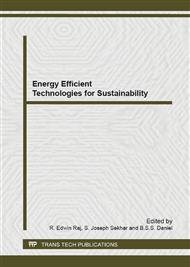p.351
p.359
p.364
p.371
p.378
p.388
p.392
p.398
p.404
Stability Improvement in Power Systems Using Unified Power Flow Controller (UPFC)
Abstract:
Flexible AC transmission system (FACTS) is a system composed of static equipments used for ac transmission of electric energy to improve the power transfer capability and to enhance controllability of interconnected network. Unified Power Flow Controller (UPFC) is the most widely used FACTS device for providing fast acting reactive power compensation on high voltage electricity transmission network. This paper deals with the designing of Adaptive Neuro Fuzzy Inference controller (ANFIC) and fuzzy based Particle Swarm Optimization (PSO) controller for the performance analysis of UPFC. The controller have been designed and tested for controlling the real and reactive power of UPFC. Fuzzy-PI controller is used to control the shunt part of UPFC. The system response under high short circuit level is tested on 5-bus system and 118-bus system. Computer simulation by MATLAB/SIMULINK has been used to verify proposed control strategies.
Info:
Periodical:
Pages:
392-397
Citation:
Online since:
September 2013
Authors:
Price:
Сopyright:
© 2013 Trans Tech Publications Ltd. All Rights Reserved
Share:
Citation:


